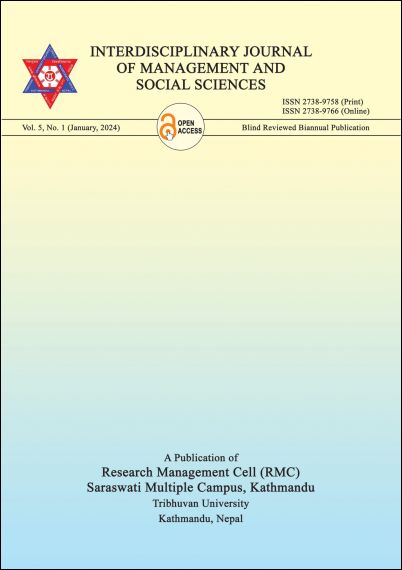ARIMA Modeling and Forecasting of National Consumer Price Index in Nepal
DOI:
https://doi.org/10.3126/ijmss.v5i1.62666Keywords:
Box–Jenkins methodology, autocorrelation function, partial autocorrelation function, time series data, Augmented Dickey-Fuller testAbstract
This research aims to determine an Auto-Regressive Integrated Moving Average (ARIMA) model and forecasting the National Consumer Price Index (NCPI) in Nepal, using annual data from the fiscal year 1972/73 to 2022/23. The research utilized secondary data collected from the online bulletin published by Nepal Rastra Bank, aiming to enhance understanding of NCPI patterns and contribute to predictive modelling techniques for economic indicators. Adopting the Box-Jenkins technique and using E-Views statistical software, this study identifies ARIMA (1, 2, 8) as the most suitable model for NCPI forecasting. This selection is validated through meticulous diagnostic tests, affirming the appropriateness of the model, as evidenced by residuals exhibiting white noise characteristics. The research findings suggest a rapid increase in the National Consumer Price Index for the coming years. Implications of this research extend to both academic and policy-oriented audiences. A successful ARIMA model development holds significant potential for providing accurate predictions of future price trends in Nepal. This, in turn, can assist policymakers in making informed decisions regarding economic strategies, monetary policies, and inflation control measures. Moreover, the study's outcomes offer a foundational framework for future research endeavours in the domain of economic forecasting and modelling, contributing to the broader field of economic analysis and policy formulation.
Downloads
Downloads
Published
How to Cite
Issue
Section
License

This work is licensed under a Creative Commons Attribution-NonCommercial 4.0 International License.

